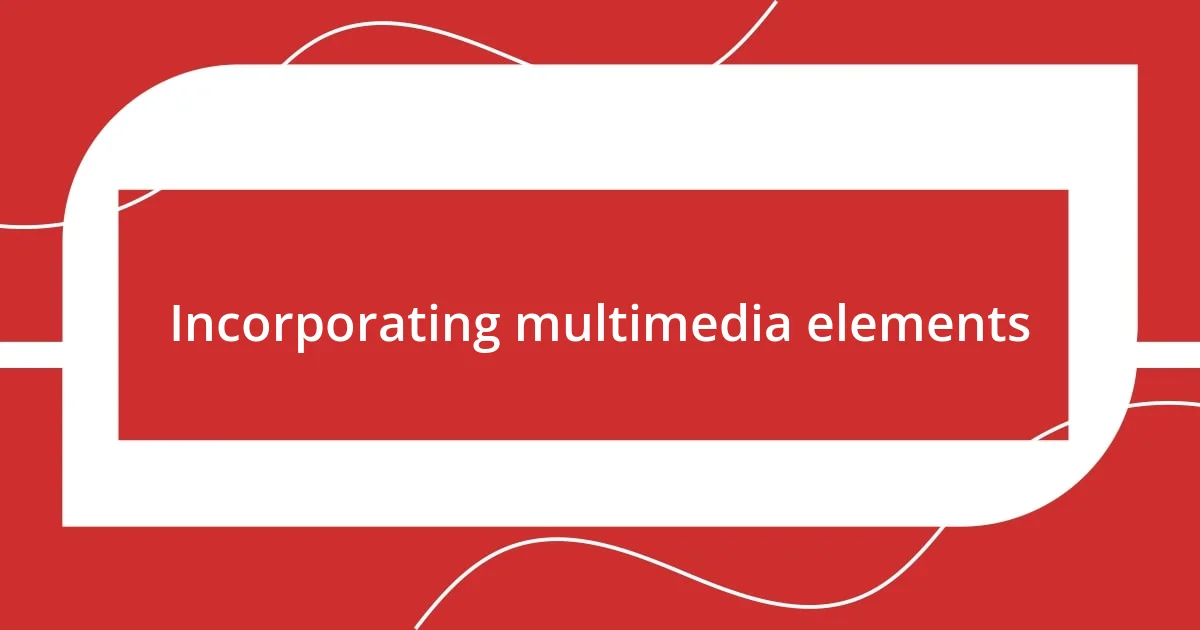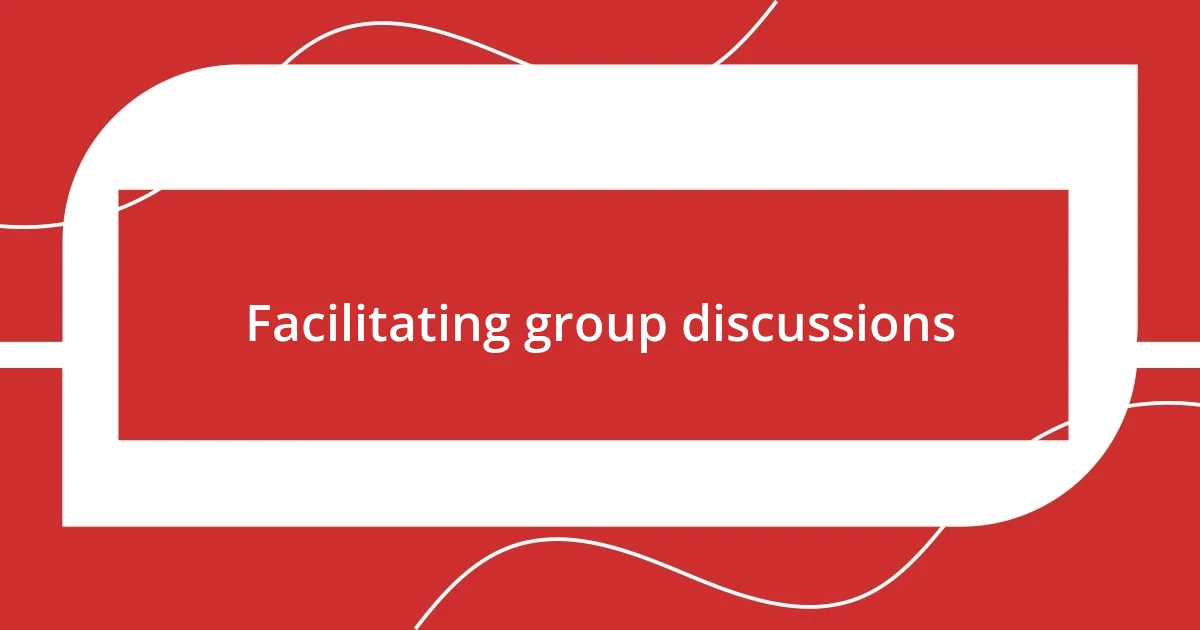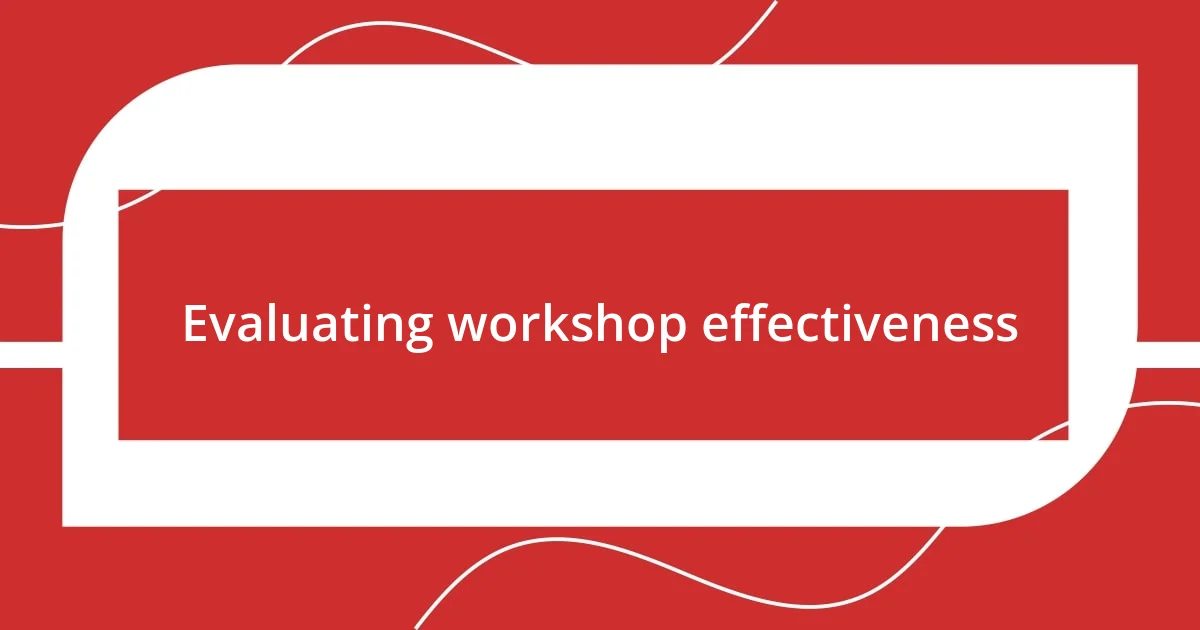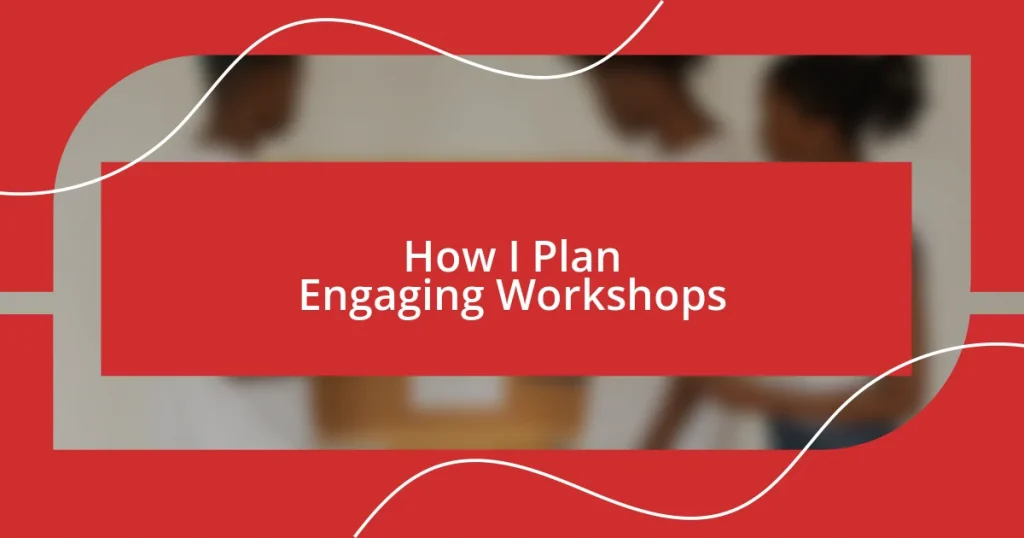Key takeaways:
- Establishing clear, measurable objectives enhances participant engagement and fosters tangible results.
- Incorporating interactive activities and multimedia elements significantly boosts participant involvement and understanding.
- Gathering real-time and qualitative feedback is essential for continuous improvement and creating a culture of open communication.

Understanding workshop objectives
Understanding workshop objectives is a crucial first step that I never overlook. During one of my early workshops, I realized that clarity in objectives led not only to better participant engagement but also to a more focused discussion. Have you ever experienced a session that felt aimless? It’s frustrating, right? That’s why I now emphasize establishing clear, measurable objectives right from the start.
When I plan my workshops, I often reflect on the specific outcomes I hope the participants will achieve. For example, I once structured a workshop around the objective of improving team collaboration techniques. After the session, I was thrilled to hear participants share how they planned to implement those techniques in their daily interactions. Those moments reinforce my belief that well-defined objectives foster tangible results.
I also find it helpful to invites feedback on these objectives from potential attendees. It’s enlightening to hear their perspectives, and sometimes they highlight areas I hadn’t considered. What if an objective resonates more with them than others? I believe engaging with participants in setting these goals not only makes them feel valued but also enhances their commitment to the workshop.

Identifying audience needs
When it comes to identifying audience needs, I have learned that listening is just as vital as presenting. During one of my workshops, I found myself bombarded with questions that revealed underlying themes and concerns I hadn’t anticipated. That experience taught me how critical it is to create space for dialogue before finalizing my content. By understanding what attendees are truly interested in, I can tailor my approach to resonate deeply with their needs.
To effectively pinpoint these requirements, I recommend considering the following strategies:
- Surveys or questionnaires: Collect data on participants’ goals and expectations beforehand.
- Pre-workshop interviews: Engage a few attendees to explore their specific interests and challenges.
- Focus groups: Bring together a small group to discuss needs and insights in detail.
- Observation of past sessions: Analyze feedback and response patterns from similar workshops to identify trends.
These techniques have not only helped me bond with my audience but also enriched the overall workshop experience, making participants feel more seen and valued.

Designing interactive activities
When designing interactive activities, I focus on making sure they are engaging and relevant to participants. One time, I introduced a role-playing exercise where attendees had to embody different team roles. Seeing their faces light up as they acted out scenarios was priceless. It not only broke the ice but allowed them to step into other people’s shoes, fostering empathy and understanding. Have you ever tried something similar in a workshop? The energy in the room can shift dramatically when people actively participate.
I’ve also found that using technology can enhance interactivity. For instance, during a recent tech-oriented workshop, I utilized live polling to gauge opinions on various topics in real-time. The immediate feedback created an engaging environment where everyone felt their voice mattered. It’s amazing how simple tools like smartphones can bridge gaps and energize a group. What tools have you experimented with in your own sessions?
Finally, I believe the physical setup of the room can greatly impact interaction levels. For my workshops, I prefer a circular seating arrangement, which encourages discussion and collaboration. In one workshop, I noticed how participants were more willing to share ideas when chairs were arranged in a circle rather than in rows. This openness fostered a more participatory atmosphere. Have you considered how your space could influence interaction?
| Activity Type | Description |
|---|---|
| Role-Playing | Participants act out scenarios to enhance understanding and empathy. |
| Live Polling | Real-time feedback through audience participation, creating an engaging environment. |
| Circular Seating | A layout that promotes collaboration and open discussion among participants. |

Incorporating multimedia elements
Integrating multimedia elements into my workshops has transformed the way I connect with participants. I remember one session where I incorporated a brief video to illustrate a complex concept. The moment the video ended, I saw participants nodding and whispering insights to one another—clearly, the visual element sparked a deeper understanding. It made me realize that sometimes, a simple image or sound can convey meaning more powerfully than words alone.
I’ve also found that using presentation tools like Prezi or Canva can elevate the training experience. During one workshop, I opted for visually dynamic slides that highlighted key points through animation and engaging graphics. The feedback was overwhelmingly positive, with many attendees noting that the fresh formats helped retain their attention. Have you ever considered how design can shape perceptions in a learning environment? I believe that a well-crafted visual narrative can truly enhance the learning journey.
Additionally, incorporating audio elements, such as background music or recorded testimonials, has proven effective in fostering a specific mood. In one of my workshops, I played soft music during reflective activities, creating a serene atmosphere that encouraged participants to engage more deeply with their thoughts. It’s fascinating how audio can influence emotions and openness to learning. What kinds of multimedia outcomes have you noticed in your own sessions?

Facilitating group discussions
When facilitating group discussions, I find that setting the right tone is crucial. In one workshop, I began by sharing a personal story about a challenge I faced in my career. This vulnerability created a connection with the participants, prompting them to open up and share their experiences. Have you noticed how sharing personal anecdotes can pave the way for deeper engagement in conversations?
Another strategy I often employ is to create small breakout groups, allowing participants to discuss topics more intimately before returning to the larger group. I remember a session where we tackled a complex issue, and breaking into smaller groups sparked vibrant conversations. When everyone reconvened, the energy was palpable, and fresh ideas flowed. It’s amazing how people often feel more comfortable speaking in smaller circles. Have you explored this technique in your workshops?
Lastly, I emphasize active listening during discussions. I always make it a point to acknowledge contributions, which fosters an encouraging environment. One time, I had a participant share an idea that resonated with everyone, and I made sure to highlight its significance. The ripple effect of that recognition not only boosted the speaker’s confidence but inspired others to contribute their thoughts as well. How do you ensure every voice is heard in your session?

Evaluating workshop effectiveness
Evaluating the effectiveness of my workshops is just as important to me as the planning phase. After each session, I always distribute a quick feedback survey, asking participants to rate various aspects, like content clarity, engagement levels, and overall satisfaction. Recently, I received feedback indicating that my explanations sometimes lacked depth. This insight made me rethink my approach and adjust my materials to provide clearer, more comprehensive information next time. Have you ever found surprising insights hidden in feedback?
Another approach I take is to hold a debriefing session immediately following the workshop. I often gather informal feedback while the experience is still fresh in participants’ minds. A few months ago, during this kind of debrief, an attendee shared how a specific activity reshaped their perspective on teamwork. Their enthusiasm encouraged me to incorporate more of these interactive elements in future workshops. Isn’t it intriguing how real-time reflections can lead to immediate improvements?
Lastly, I like to assess long-term impact by following up a few weeks later. I remember reaching out to a group after a leadership workshop, and several participants shared how they applied what they learned to their projects. Hearing their success stories not only validated my methods but also fueled my passion for continuous improvement in my workshop designs. How do you measure the lasting effects of your sessions?

Gathering feedback for improvement
Gathering feedback is a vital step in sharpening our workshop approaches. One time, I used a more open-ended question on my feedback form, allowing participants to express their thoughts without limitations. The responses I received were enlightening—while some praised the interactive activities, others pointed out that certain topics felt rushed or unclear. This kind of qualitative feedback often reveals deeper insights than a simple rating scale can provide. Have you ever considered how the nuances in open-ended responses can drive your improvements?
During workshops, I also encourage participants to provide real-time feedback as we go along. I recall a session where we incorporated a “stop and swap” method, allowing participants to suggest adjustments on the spot. When one participant voiced their concerns about the pacing, it led to an impromptu discussion that not only clarified the material but also enhanced our collective learning experience. Isn’t it fascinating how immediate feedback can transform a workshop in real-time?
Looking back, I’ve learned that feedback is not just about collecting forms; it’s about fostering a culture of open communication. There was a workshop where I offered personal incentives to encourage feedback, such as a small prize for the most constructive comment. The playful competition lightened the mood and resulted in feedback that was both candid and actionable. How have you made feedback feel like a two-way street in your own sessions?















